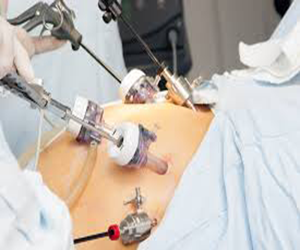Today, laparoscopic surgery is a widely accepted surgical technique that uses small incisions and long pencil-like instruments to perform operations with a camera. As the incisions are much smaller than their open counterparts, recovery is faster and post-operative pain is typically less. Procedures such as hernia repairs, gastric bypass, bowel resection, and organ removal are now routinely carried out laparoscopically.
Introduction: Welcome to our one-stop resource for information on laparoscopic gallbladder stone surgery, a cutting-edge and minimally invasive solution for the discomfort caused by gallstones. In this concise guide, we aim to provide you with comprehensive insights into the procedure, its benefits, and what you can anticipate throughout the entire process.
Understanding Laparoscopic Gallbladder Stone Surgery: Laparoscopic gallbladder stone surgery, also known as laparoscopic cholecystectomy, is a state-of-the-art surgical technique designed to remove gallstones and, in certain cases, the entire gallbladder. Departing from traditional open surgery, this procedure involves small incisions, specialized tools, and a camera to ensure precision and efficiency.
Key Benefits:
Minimally Invasive: Experience reduced pain, faster recovery, and minimal scarring compared to conventional open surgery.
Swift Recovery: Typically, patients can resume normal activities sooner, contributing to an overall quicker recovery time.
Short Hospital Stay: In most cases, patients can return home on the same day or within a short hospital stay.
Lower Complication Risk: The minimally invasive nature of the surgery often results in a lower risk of complications compared to open procedures.
Enhanced Cosmetic Outcome: Smaller incisions contribute to a more aesthetically pleasing result, with minimal scarring.
Procedure Overview:
Anaesthesia: You’ll receive general anaesthesia for a pain-free and comfortable surgical experience.
Small Incisions: Typically 3-4 small incisions are made in the abdominal area to facilitate the insertion of specialized instruments and a camera.
Visualization:* Surgeons use the camera to navigate and visualize the gallbladder and surrounding structures on a monitor.
Gallstone Removal: The surgeon carefully removes gallstones or the entire gallbladder, depending on the severity of the condition.
Incision Closure: Incisions are closed with sutures or adhesive strips for minimal scarring.
Recovery Room Monitoring: Post-surgery, you’ll be monitored in a recovery room until the effects of anaesthesia wear off.
Pain Management: Your healthcare team will provide strategies to ensure a comfortable recovery.
Gradual Resumption: Gradually resume normal activities and adhere to a light diet as advised by your healthcare provider.
Follow-up Sessions: Periodic follow-up sessions will be arranged to track your recovery progress and address any questions or concerns you may have.
Conclusion: Laparoscopic gallbladder stone surgery stands as a safe, effective, and minimally invasive solution to alleviate the discomfort caused by gallstones. For personalized information or to discuss your concerns, consult with your healthcare provider. Your journey to relief and recovery starts here.

